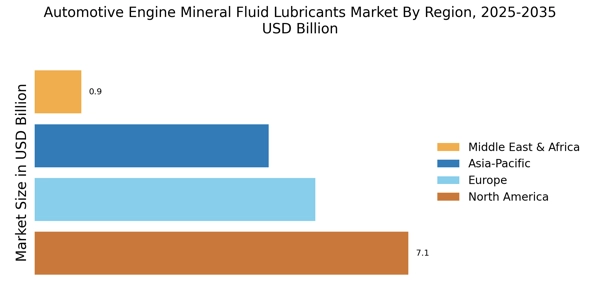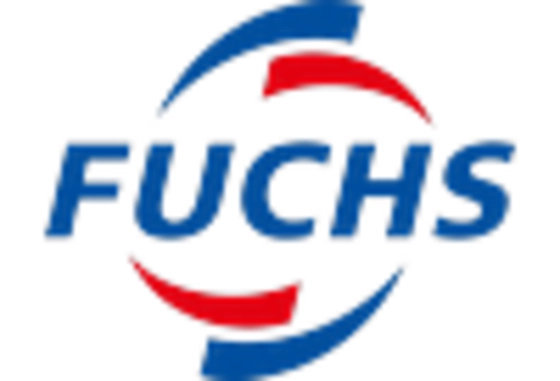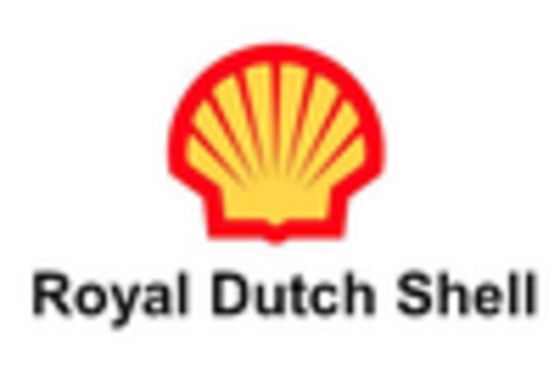Rising Vehicle Production
The Automotive Engine Mineral Fluid Lubricants Market is experiencing growth due to the increasing production of vehicles worldwide. As manufacturers ramp up production to meet consumer demand, the need for high-quality lubricants becomes paramount. In 2025, the automotive sector is projected to produce over 90 million vehicles, which directly correlates with the demand for engine lubricants. This surge in vehicle production not only drives the need for lubricants but also encourages innovation in lubricant formulations to enhance engine performance and longevity. Consequently, the Automotive Engine Mineral Fluid Lubricants Market is likely to witness a significant uptick in sales as manufacturers seek to optimize engine efficiency and reduce wear and tear.
Expansion of Aftermarket Services
The expansion of aftermarket services is a crucial driver for the Automotive Engine Mineral Fluid Lubricants Market. As vehicle ownership increases, so does the demand for maintenance and repair services, which often include lubricant changes. The aftermarket segment is projected to grow significantly, with estimates suggesting a rise of over 5% in lubricant sales through service centers and workshops by 2025. This trend indicates that consumers are increasingly relying on professional services for vehicle maintenance, thereby boosting the demand for high-quality mineral lubricants. As a result, the Automotive Engine Mineral Fluid Lubricants Market is poised for growth, driven by the expanding network of service providers and the increasing focus on vehicle upkeep.
Regulatory Compliance and Standards
The Automotive Engine Mineral Fluid Lubricants Market is also shaped by stringent regulatory compliance and standards aimed at reducing emissions and improving fuel efficiency. Governments worldwide are implementing regulations that require automotive lubricants to meet specific performance criteria. This has led to an increased demand for lubricants that not only comply with these regulations but also enhance engine efficiency. In 2025, it is anticipated that the market will see a shift towards lubricants that meet higher environmental standards, thereby driving innovation in formulation. Consequently, the Automotive Engine Mineral Fluid Lubricants Market is likely to experience growth as manufacturers adapt to these regulatory changes and develop compliant products.
Growing Awareness of Engine Maintenance
There is a notable increase in consumer awareness regarding the importance of regular engine maintenance, which is positively impacting the Automotive Engine Mineral Fluid Lubricants Market. As vehicle owners become more informed about the role of lubricants in prolonging engine life and improving performance, they are more inclined to invest in quality products. This trend is reflected in the rising sales of premium mineral lubricants, which are perceived to offer better protection and efficiency. In 2025, the market for engine lubricants is expected to grow by approximately 4% annually, driven by this heightened awareness. Thus, the Automotive Engine Mineral Fluid Lubricants Market stands to benefit from consumers prioritizing maintenance and quality.
Technological Innovations in Lubricants
The Automotive Engine Mineral Fluid Lubricants Market is significantly influenced by ongoing technological innovations in lubricant formulations. Advances in additive technology and refining processes have led to the development of superior mineral lubricants that enhance engine performance and efficiency. For instance, the introduction of synthetic blends and high-performance additives has improved the thermal stability and viscosity of lubricants, making them more effective under extreme conditions. As automotive technology evolves, the demand for advanced lubricants that can meet the requirements of modern engines is expected to rise. This trend suggests that the Automotive Engine Mineral Fluid Lubricants Market will continue to expand as manufacturers innovate to meet the changing needs of consumers.


















Leave a Comment